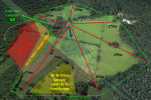Greetings fellow pilots, I have a question for you all and would be grateful if someone be kind enough to give me the answer.
There seems to be a lot of unhappiness based on the DJI Avata, from what I can gather from searching the the Internet it appears that the rating on the UK DJI Avata seems to be a much lower specification than the ones that our American cousins can boast about. I get the impression that because of the rating of the drone here in the UK (C rating I think) it lacks the range and possibly the signal strength compared to the model available in the USA.
Question one: Am I right in the assumption that there is a noticeable difference between the UK and the USA DJI Avata?
And question 2: Would it be an idea to have a family member who lives in the USA to purchase a DJI Avata in the hopes that I can get a better drone?
Please excuse my ignorance, the only way one can learn is by listening to the help and advice of others, so I am listening to you guys, can you help me, please?
Thank you all in advance.
Kind regards
Wulfrune.
There seems to be a lot of unhappiness based on the DJI Avata, from what I can gather from searching the the Internet it appears that the rating on the UK DJI Avata seems to be a much lower specification than the ones that our American cousins can boast about. I get the impression that because of the rating of the drone here in the UK (C rating I think) it lacks the range and possibly the signal strength compared to the model available in the USA.
Question one: Am I right in the assumption that there is a noticeable difference between the UK and the USA DJI Avata?
And question 2: Would it be an idea to have a family member who lives in the USA to purchase a DJI Avata in the hopes that I can get a better drone?
Please excuse my ignorance, the only way one can learn is by listening to the help and advice of others, so I am listening to you guys, can you help me, please?
Thank you all in advance.
Kind regards
Wulfrune.












